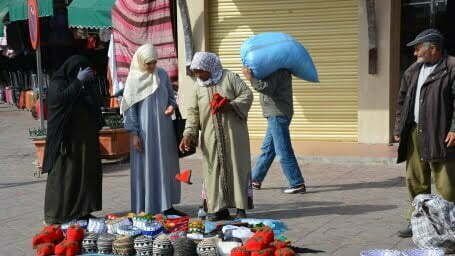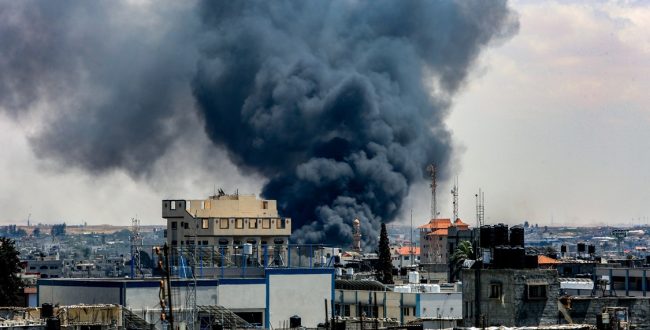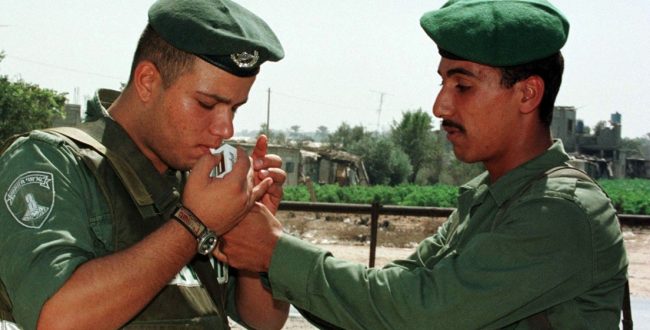In early 2017, a senior official in Morocco’s Ministry of Interior gave an anonymous interview to a local news website in which he declared that the ministry was taking steps to ban all import, manufacturing and marketing of the ‘burqa’ – a traditional Islamic garment that covers women from head to toe. The stated reason was “security concerns” over crime and especially terrorism. Traders reported receiving written warning that they must destroy their stock of burqas within 48 hours. Meanwhile, no official statement was issued confirming the ban, and nowhere was it mentioned that wearing the burqa in itself would be prohibited. This lack of clarity generated considerable debate.
The use of the term ‘burqa’, which refers to the full body cover common in Afghanistan and not in the Maghreb, was a source of confusion. Some media channels and pundits used the term niqab – a similar garment used mostly in Saudi Arabia and in the Gulf states – while others claimed that there was no intention of banning the nikab, which has become popular in recent decades among Salafi circles in Morocco, especially in the northern parts of the country.
Public debate developed into a heated discussion over which head or body covers are appropriate in Morocco, a country that enjoys a moderate, tolerant form of Islam. Many argued that religious women in Morocco prefer the hijab, which covers the head only, noting that the burqa and the nikab are not widely used as they are “radical Islamic imports from Afghanistan or the Middle East”. At the same time, they stressed the legitimacy of wearing traditional Moroccan head and body covers.
Such attire includes the haik, which covers the face and is also worn by Berber/Amazigh women identified with popular Sufi Islam, and the djellaba, a long embroidered robe with sleeves that does not necessarily cover the head. Conservative figures, most of them Islamist, struck back by recalling that miniskirts and jeans are also “imports from the West”.
Nevertheless, the debate is not divided down the middle between Islamists who oppose the burqa ban and secularists or women who support it. For example, a group of Salafi women wearing nikabs protested the ban outside the Moroccan parliament. Dozens of Islamist activists demonstrated against it, too, while stressing that wearing a nikab does not contradict Morocco’s rules of tolerant Islam (‘wasatia’).
However, Salafi sheik Muhammad Al-Fizazi, who in recent years has disavowed violence and grown closer to the royal palace, supported the ban on the grounds that “the burqa has become a symbol of radical Islamist groups”. On the other hand, left-wing activists and human rights groups flatly rejected the ban, claiming that it violates individual rights enshrined in the Moroccan constitution and is legally invalid.
The voice of Morocco’s religious establishment – the High Religious Committee and the Ministry of Religious Affairs – has been markedly absent from the discussion. King Mohammed VI, who is both a political and religious leader and bears the title ‘Amir al-Mu’minin’ (“Commander of the Faithful”), also refrained from responding.
The king remains popular despite the Arab Spring, which did not entirely pass Morocco by. He frequently voices objection to radical Islam and emphasizes his willingness to fight it, without relinquishing political reform and democratization. Indeed, Morocco currently appears to be one of the safest and most stable countries in the region. It is also the only Arab country in which an Islamist party, the Justice and Development Party (PJD) remains in power.
Nevertheless, the king and his close advisers continue to be highly involved in party politics. Since coming to power in 2011, the PJD has established coalitions with secular parties that enjoy close ties with the palace, and key portfolios such as the Ministry of Interior were given to technocrats appointed by the king. After the party’s last victory in the October 2016 parliamentary elections, Morocco was swept up in an unprecedented political crisis that led the king to dismiss the PJD’s charismatic leader, Abdelilah Benkirane, from the position of prime minister.
Senior party members have refrained from commenting on the burqa ban and tying the affairs together, but religious clerics affiliated with the PJD did the link the two, hinting that the burqa story was intended to damage the image of the ruling party and calling the Ministry of Interior “a separate shadow government”, thereby implying the close connection between this ministry and the royal palace.
From an international perspective, the burqa ban controversy should be seen in the context of growing opposition to Islamic head and body covers for women in Europe, along with the rise of the radical Right throughout the continent and especially in France (Marine Le Pen’s National Front Party was quick to laud the Moroccan move).
This may be Morocco’s way of signalling to right-wing movements in Europe that it is willing to collaborate with them against radical Islam – especially as many immigrant communities in Europe hail from Morocco. The Arab media has portrayed Morocco as the first Arab country to place such a ban. However, in the African union, which Morocco recently re-joined, Niger, Chad, Gabon and the Congo – all former French colonies – have instated similar prohibitions.
Translator: Michelle Bubis


















